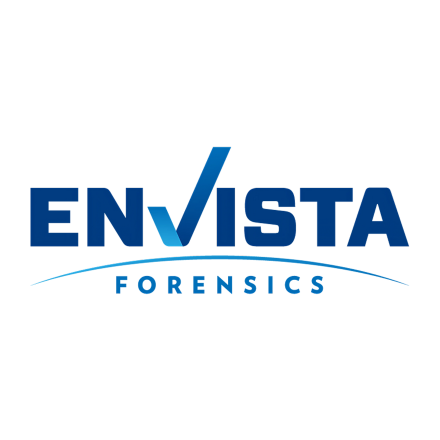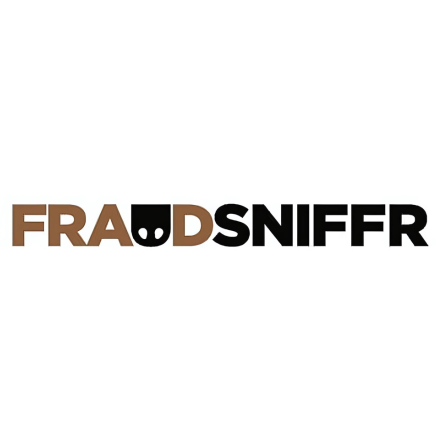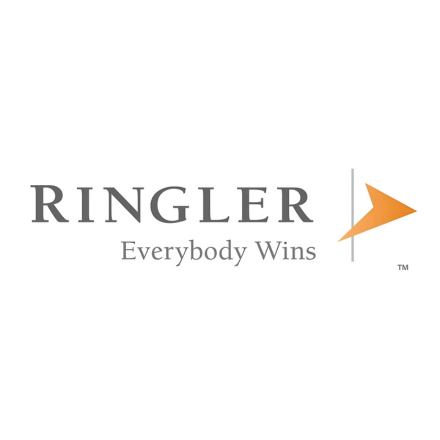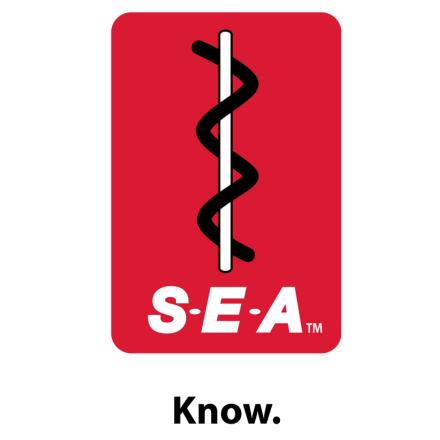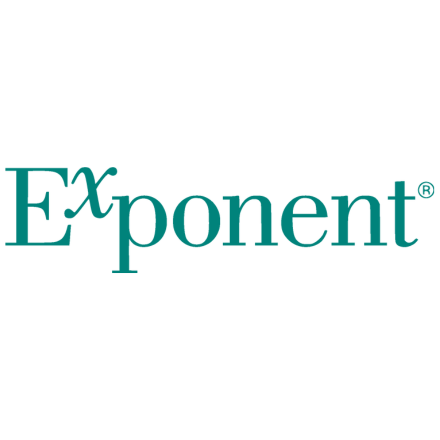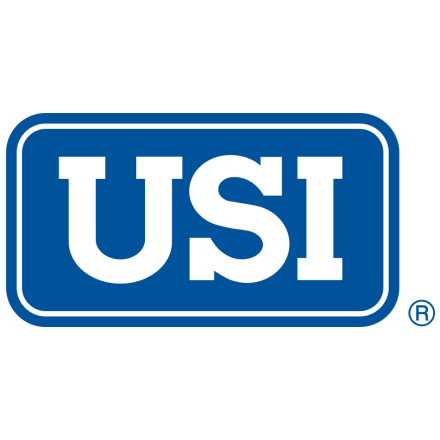Overview of the State of Oklahoma Court SystemAt Themis Advocates Group, we are committed to providing invaluable resources to members and clients alike.
Name of Preparer: Kyle Rogers, Rhodes, Hieronymus, Jones, Tucker & Gable PLLC City and State of Firm: Tulsa, Oklahoma Overview of State of OklahomaCourt SystemA. Trial Courts Each Oklahoma county has a district court—77 district courts in total. The State has 75 district judges, 77 associate district judges, and 89 special judges to preside over the cases in district court. Oklahoma district courts are courts of general jurisdiction. The district courts also preside over small claims court in Oklahoma. Claims cannot exceed $6,000 for claims of breach of contract, injuries, or to recover personal property. Oklahoma also has courts of limited jurisdiction. The Workers’ Compensation Court has 10 judges which hear cases on injury compensation claims under Oklahoma’s Workers’ Compensation Act. The Court of Tax Review, consisted of 3 district judges, hears protests on tax levies. Oklahoma district court judges are elected to serve 4-year terms except for special judges, who are appointed by the district judges. Vacancies during a term are filed by appointment by the governor from a list of 3 applicants submitted by the Judicial Nominating Commission. Elections are non-partisan. Political contributions/contributors are published on a state website. A jury consists of 12 people in district court, and it requires nine jurors to concur (in civil matters). (In some instances a jury may consist of 6 people, but this would be very rare). B. Appellate Courts The Oklahoma Supreme Court is comprised of nine judicial districts, with one justice coming from each district. The Oklahoma Court of Civil Appeals consists of twelve judges. The judges are divided into four panels, two panels sitting in Oklahoma City, two in Tulsa. Judges are initially appointed by the Governor of Oklahoma, but serve for six years and must then stand for retention in the general election. Appointments are made from a list of 3 applicants selected by the Judicial Nominating Commission. If a judge receives a “do not retain” vote, then a replacement is selected by the governor. An appeal in Oklahoma is from a final judgment with some exceptions. Those exceptions, interlocutory reviews, include statutory exceptions (like orders granting, denying, or vacating an injunction or other provisional remedy or an order granting a new trial), if a court has designated a claim for appeal where multiple parties and multiple claims are involved (certify for appeal), and through mandamus or prohibition action. A party can petition for a writ of prohibition or mandamus to block a particularly egregious act or failure to act by a court. An appeal is commenced by filing a petition of error with the Oklahoma Supreme Court, serving a copy to the trial court and to each party. The petition in error must be filed within 30 days of the filing of judgment. The Supreme Court will generally assign the appeal to the Court of Civil Appeals, but a party can move for the Supreme Court to retain the appeal. The Appellant is required to designate the record at the time the petition in error is filed. Appellee can counter designate a record. The Oklahoma Supreme Court has also created an accelerated appeals process for orders dismissing cases for failure to state a claim or lack of jurisdiction and for summary judgments. No briefing is permitted and the record is limited to the order being appealed, the pleadings, motions and responses, transcripts of hearings, and reconsideration motions. After a case is decided by the Court of Civil Appeals, any party may file a petition for certiorari to the Oklahoma Supreme Court. ProceduralA. Venue i. General Principles
ii. General Rule (Okla. Stat. tit. 12, § 139)
iii. Special Venue for Specific Cases
iv. Rules for Special Defendants
v. Forum Non Conveniens (Okla. Stat. tit. 12, § 140.2)
B. Statute of Limitations ii. A 1 year statute of limitations for
ii. A 2 year statute of limitations for
iii. Contracts
iv. Actions to recover real property have a 15 year statute of limitations
v. Statute of Repose
vi. Accrual
vi. Tolling
vii. Borrowing Statute Oklahoma’s borrowing statute, in a conflict of laws analysis, will take the longer of the two states’ statute of limitations. Okla. Stat. tit. 12, § 105. C. Time for Filing an Answer An answer must be filed 20 days after service of process. Defendant may file a reservation of time which extends time to respond 20 days from last date for answering—but this waives certain defenses. Okla. Stat. tit. 12, § 2012(A)(1). A reply to a counterclaim must be filed in the answer within 20 days from service of the answer. 1. Computing Time (Okla. Stat. tit. 12, § 2006)
2. Affirmative Defenses (Okla. Stat. tit. 12, § 2012)
D. Dismissal Re-Filing of Suit Plaintiffs can dismiss a petition voluntarily under Okla. Stat. tit. 12, § 683. The plaintiff can refile within one year of the date of dismissal. Okla. Stat. tit. 12, § 100. If the plaintiff dismisses a second time, the dismissal is permanent. LiabilityA. Negligence 1. Common Law Negligence A negligence claim requires “first, that the defendant had a duty to protect the plaintiff from injury; second, that the defendant failed to properly exercise or perform that duty, and third, that the defendant’s failure to properly exercise or perform that duty caused the plaintiff’s injury.” Craft v. Graebel-Okla. Movers, Inc., 178 P.3d 170, 178 (Okla. 2007). “Determining whether a plaintiff is owed a duty of care in a negligence action is a question of law, and if no such duty is owed, ‘there can be no liability for negligence as a matter of law.’” Estate of Linda J. Barclay Doyle v. Sprint/Nextel Corp., 248 P.3d 947, 949 (Okla. Civ. App. 2011) (quoting Lowery v. Echostar Satellite Corp., 160 P.3d 959, 964 (Okla. 2007)). The rule of thumb in Oklahoma is that “a person owes a duty of care to another person whenever the circumstances place the one person in a position towards the other person such that an ordinary prudent person would recognize that if he or she did not act with ordinary care and skill in regard to the circumstances, he or she may cause danger of injury to the other person.” Lowery, 160 P.3d at 964. “The most important consideration in determining the existence of a duty of care is foreseeability of harm to the plaintiff.” Id. at 964. 2. Comparative Negligence A plaintiff cannot recover if his/her negligence is of a greater degree than the defendants or the combined defendants causing the damage. A jury awards both the plaintiff and defendant a percentage of negligence. If Plaintiff’s negligence is over 50%, he/she is barred from recovery. Okla. Stat. tit. 23, § 13. B. Negligence Defenses
C. Gross Negligence, Recklessness, Willful and Wanton Conduct The Oklahoma Supreme Court held in Graham v. Keuchel, 1993 OK 6, 52, 847 P.2d 342, 363, that a "jury must be instructed that while ordinary negligence may be used as a defense against gross negligence, it may not be considered as a defense against any form of conduct found to be willful and wanton or intentional." D. Negligent Hiring and Retention The Supreme Court of Oklahoma has consistently ruled that such corporate torts as negligent hiring, training, supervision, entrustment and/or retention claims (or “any other theory for imposing liability against an employer”) impose no additional liability where the employer’s potential vicarious liability was established through stipulation. SeeJordan v. Cates, 1997 OK 9, 935 P.2d 289, 293 and N.H. v. Presbyterian Church, 1999 OK 88, 998 P2d 592, 600. If a party does not stipulate to the employment status of the employee, a party can proceed on a claim for negligent hiring/retention. E. Negligent Entrustment A plaintiff can bring a claim for negligent entrustment of an automobile when a person allows another to take possession of the vehicle when the person knows or reasonably should know that the other driver is careless, reckless, and incompetent, then injury results. Green v. Harris, 2003 OK 55, 70 P.2d 866, 868- 69. Courts also allow evidence of prior accidents of the driver or bad driving habits to show knowledge on the part of the vehicle owner. Id. F. Dram Shop In Brigance v. Velvet Dove Restaurant, 725 P.2d 300, 304 (Okla. 1986), the Oklahoma Supreme Court rejected the common law rule of non-liability for tavern owners with respect to injured third parties, holding that “one who sells intoxicating beverages for on the premises consumption has a duty to exercise reasonable care not to sell liquor to a noticeably intoxicated person.” In Tomlinson v. Love’s Country Stores, Inc., 854 P.2d 910, 912 (Okla. 1993), the Supreme Court acknowledged the profit potential for liquor vendors as one of the driving reasons for imposing dram shop liability against the commercial vendor of alcohol: "The Legislature has placed on every vendor who holds a license to furnish alcoholic beverages and a concomitant right of profit from its sale the responsibility to refrain from supplying those beverages to minors or to intoxicated persons." This Court made a similar acknowledgment in Busby v. Quail Creek Golf and Country Club, 1994 OK 63, 885 P.2d 1326, 1331, "[t]he public regulates and licenses commercial vendors to sell and distribute alcohol for profit. The public has a right to demand that a commercial vendor act more prudently and with greater duty towards minors than is asked of a private person who hosts a party." In Oklahoma issues involving minors being served alcohol are treated under a negligence per se analysis. See Busby v. Quail Creek, 885 P.2d 1326. G. Joint and Several Liability For causes of action that accrue after November 1, 2011, joint and several liability has been eliminated. Okla. Stat. tit. 23, § 15. For causes of action that accrue before November 1, 2011, but after November 1, 2009, where liability is caused by two or more persons/entities, a joint tortfeasor is only liable for the amount of damages/fault individually allocated to him/her with no liability for damages proximately caused by the negligence of another tortfeasor. Okla. Stat. tit. 23, § 15. But if a defendant is 50% at fault or more for the plaintiff’s injury, that defendant will be jointly and severally liable. Or if the joint tortfeasor acted with willful and wanton conduct or with reckless disregard to the consequences of his/her conduct and caused damages, the liability shall be joint and several to that tortfeasor. H. Wrongful Death and/or Survival Actions The personal representative may maintain an action against a person/entity who caused death by wrongful act or omission. Okla. Stat. tit. 12, § 1053(A). The action must be brought within two years of death. Id. The personal representative can recover funeral/burial expenses, loss of consortium of a spouse, mental pain and suffering of decedent (which is given to spouse/children), pecuniary loss to the survivors, loss of companionship of children, and medical expenses. I. Vicarious Liability Oklahoma law imposes vicarious liability on employers “for injury proximately resulting from the acts of a servant done within the scope of the servant’s employment.” Hatcher v. Traczyk, 2004 OK CIV APP 77, ¶ 8, 99 P.3d 707, 709. The “burden is upon the plaintiff to show, not only that the alleged employee was an employee of the defendant, but that at the time the injury was sustained he was engaged in the performance of an act which was within the scope of his employment.” Elias v. Midwest Marble & Tile Co., 1956 OK 259, 302 P.2d 126 (Syllabus 1). An essential element of the employer-employee relationship is the right to control: “Without its presence no employment relation may exist in contemplation of law.” Okla. City Zoological Trust v. State ex rel. Pub. Emps. Relations Bd., 2007 OK 21, ¶ 11, 158 P.3d 461, 466; see McGee v. Alexander, 2001 OK 78, ¶ 29, 37 P.3d 800, 807 (“An essential element of an agency relationship is that the principal has some degree of control over the conduct and activities of the agent.”). The Oklahoma Supreme Court has defined the scope or course of employment as: [A]n act is within the course of employment if (1) it be something fairly and naturally incident to the business, and if (2) it be done while the servant was engaged upon the master’s business and be done, although mistakenly or illadvisedly, with a view to further the master’s interest, or from some impulse of emotion which naturally grew out of or was incident to the attempt to perform the master’s business, and did not arise wholly from some external, independent, and personal motive on the part of the servant to do the act upon his own account. Roring v. Hoggard, 1958 OK 130, 326 P.2d 812 (Syllabus 2); see also Tuffy’s, Inc. v. City of Okla. City, 2009 OK 4, ¶ 7, 212 P.3d 1158, 1163 (“Under the theory of respondeat superior, one acts within the scope of employment if engaged in work assigned, or if doing that which is proper, necessary and usual to accomplish the work assigned, or doing that which is customary within the particular trade or business.”). J. Exclusivity of Workers’ Compensation An employer’s Oklahoma Workers’ Compensation Act (OWCA) liability for accidental on-the-job injuries is “exclusive and in place of all other liability of the employer and any of his or her employees, at common law or otherwise, for such injury.” Okla. Stat. tit. 85, § 302. The exception to workers’ compensation exclusivity is “intentional torts, or where the employer has failed to secure the payment of compensation for the injured employee.” Id. An intentional injury allows an employee to seek tort remedies against the employer. Okla. Stat. tit. 85, § 302. “An intentional tort shall exist only when the employee is injured as a result of willful, deliberate, specific intent of the employer to cause such injury.” Id. § 302(B). “The immunity created by the provisions of this section shall not extend to action against another employer, or its employees, on the same job as the injured or deceased worker where such other employer does not stand in the position of an intermediate or principal employer to the immediate employer of the injured or deceased worker. Id. §302(D). DamagesA. Statutory Caps on Damages In a civil action for a claimed bodily injury, a plaintiff can recover unlimited damages for economic loss. Okla. Stat. tit. 23, § 61.2. A plaintiff’s recovery for non-economic damages cannot exceed $350,000 irrespective of the number of parties/actions involved. For professional negligence against a physician, non-economic damages are unlimited if the judge and jury find, by clear and convincing evidence, that 1) plaintiff suffered permanent and substantial physical abnormality or disfigurement, loss of use of a limb, or loss of or substantial impairment to a major body organ/system; or 2) plaintiff suffered permanent physical functional injury and cannot care for themselves and perform life sustaining activities; or 3) defendant’s acts or failures to act were: a) in reckless disregard for others’ rights; b) grossly negligent; c) fraudulent; or d) intentional or with malice. B. Compensatory Damages for Bodily Injury The jury instruction for personal injuries allows a jury to consider the following factors to award damages:
Okla. Uniform Jury Instruction No. 4.1. But Oklahoma courts have many times allowed a party to recover for a broader list of damages. The statute in Oklahoma provides that “[f]or the breach of an obligation not arising from contract, the measure of damages, except where otherwise expressly provided by this chapter, is the amount which will compensate for all detriment proximately caused thereby, whether it could have been anticipated or not.” Okla. Stat. tit. 23, § 61. The Oklahoma Supreme Court has allowed a party to pursue those damages which can be a proximate result of the injury—regardless of what they are. See Finnell v. Jebco Seismic, 2003 OK 35, ¶ 14 n.29, 67 P.3d 339 (“Tort reparations include compensation for all proximately caused harm, whether foreseeable or not.”). C. Collateral Source The Oklahoma Supreme Court has articulated the collateral source rule in Oklahoma: “a wrongdoer who commits a tort is liable for the whole loss caused by his actions, and any compensation received by the injured party from a collateral source, wholly independent of the wrongdoer will not less the damages recoverable from the wrongdoer.” Denco Bus Lines, Inc. v. Hargis, 229 P.2d 560 (Okla. 1951). Under the collateral source rule, “unless damage payment is made by tortfeasor or someone on his behalf, such payment is from a collateral source and cannot inure to benefit the defendant to lessen damages recoverable from him, and evidence of reimbursement is inadmissible.” Weatherly v. Flourney, 929 P.2d 296, 297 (Okla. 1996). A recent statutory change allows a court to exclude the “amount billed” by a medical care provider in favor of the “amounts paid” as long as there is a signed statement from the medical provider. Okla. Stat. tit. 12, § 3009.1. But this only applies to cases filed after November 1, 2011. D. Pre-Judgment/Post-Judgment Interest For all actions filed on or after January 1, 2010, accrual of interest does not begin until 24 months after the suit commences. Okla. Stat. tit. 12, § 727.1. The new prejudgment interest rate is the average US Treasury Bill rate from the previous year. Prejudgment interest is applicable to personal injury actions, and the interest would not toll if the in actions where damages were calculable. E. Damages for Emotional Distress Emotional distress can be an element of actual damages. See Okla. Uniform Jury Instruction 20.4. But evidence must be presented to support its inclusion as an element of actual damages. F. Wrongful Death and/or Survival Action Damages The Oklahoma Jury Instruction for wrongful death outlines the elements of recovery as follows:
G. Punitive Damages Punitive damages is a two-step process in Oklahoma, where jury classifies the nature of the defendant’s behavior and second determines amount of punitive damages. 1.) Classification • Based on clear and convincing evidence, the jury must determine which category the defendant’s conduct fits:
2.) The jury determines the amount of punitive damages to award. The wealth of the defendant is now at issue. H. Diminution in Value of Damaged Vehicle Property damage calculation for repairable vehicles is the cost of repair, plus loss of use, plus any depreciation to the value of the vehicle due to the damage and repair. Okla. Uniform Jury Instruction No. 4.14; Brennan v. Aston, Jr., 84 P.3d 99 (Okla. 2003). The fair market value of the vehicle under first party coverages can be determined as follows:
I. Loss of Use of Motor Vehicle See section H on diminution in value of damaged vehicle. Evidentiary IssuesA. Preventability Determination There is no Oklahoma case law which directly addresses whether a motor carrier’s preventability determination is admissible evidence. B. Traffic Citation from Accident The Oklahoma Supreme Court stated the rule excluding convictions for minor offenses in Lee v. Knight, 1989 OK 50, 771 P.2d 1003. Speaking on the admissibility of final judgments under the Oklahoma Evidence Code, the Court delineated that it was “clearly not the Legislature’s intent to make evidence of conviction of minor offenses admissible.” Id. ¶ 5, 771 P.2d at 1004; see 12 O.S. § 2803(22). Two years later, the Court once again repeated the rule for convictions for minor offenses: “Absent some exception to the settled rule, evidence of a prior conviction for a minor offense may not be admitted into evidence in a subsequent civil action arising from the same facts and circumstances in the face of a timely objection.” O’Neal v. Joy Dependent Sch. Dist., 1991 OK 118, ¶ 9, 820 P.2d 1334, 1336. The Oklahoma Court of Civil Appeals has held that a plea of guilty to a minor traffic citation “does not constitute an admission of the fact [the defendant] did the act charged in the ticket.” Moore v. Burlington N. R.R. Co., 2002 OK CIV APP 23, ¶ 8, 41 P.3d 1029, 1032 (emphasis added). The defendant in Moore checked the “guilty plea” box on the back of his traffic citation and “paid the fine pursuant to the ‘cafeteria’ system for traffic offenses.” Id. The court reiterated that the rule for minor traffic violations was that they are only admissible as an admission if they are entered knowingly and voluntarily. The Moore defendant’s use of the “cafeteria” system to pay his traffic ticket by checking the “guilty plea” box was not a plea made voluntarily or knowingly. C. Failure to Wear a Seat Belt Failure to wear a seat belt may be used in any civil proceeding as evidence. Okla. Stat. tit. 47, § 12-420; Bishop v. Takata Corp., 12 P.3d 459 (Okla. 2000). But evidence of failure to wear a seatbelt cannot be introduced if the plaintiff is a child under 16 years old. D. Failure of Motorcyclist to Wear a Helmet No published Oklahoma opinion has addressed whether evidence of failure to wear a helmet can be admitted at trial. An Oklahoma Court of Civil Appeals opinion which is unpublished has held that failure to wear a helmet could not be admitted in trial, holding that “where failure to wear a helmet did not cause the accident, we concur with Fields [v. Volkswagen that helmet use in not admissible on questions of damages.” Hagy ex rel. Hagy v. McPhearson, No. 081198 (Okla. Civ. App. Aug. 7, 1998). E. Evidence of Alcohol or Drug Intoxication The Oklahoma Legislature has provided statutory authority to require all drivers to submit to drug or alcohol testing if involved in an accident which could bring criminal charges: Any driver of any vehicle involved in an accident who could be cited for any traffic offense where said accident resulted in the immediate death or great bodily injury, as defined in subsection B of Section 646 of Title 21 of the Oklahoma Statutes, of any person shall submit to drug and alcohol testing as soon as practicable after such accident occurs. The traffic offense violation shall constitute probable cause for purposes of Section 752 of this title and the procedures found in Section 752 of this title shall be followed to determine the presence of alcohol or controlled dangerous substances within the driver's blood system. Okla. Stat. tit. 47, § 10-104(B). Violation of § 10-104(B) has been found by the Oklahoma Supreme Court to constitute “clear and convincing evidence of conduct involving dishonesty for which [attorney] discipline is warranted.”State ex rel. Okla. Bar Ass’n v. Rogers, 142 P.3d 428 (Okla. 2006). F. Testimony of Investigating Police Officer The testimony of an investigating police officer who did not witness the accident is not admissible as to fault. Gabus v. Harvey, 678 P.2d 253 (Okla. 1984). G. Expert Testimony The Oklahoma Supreme Court has adopted the standard espoused by the United States Supreme Court in Daubert v. Merrell Dowell Pharm., Inc., 509 U.S. 579 (1993), and it has been codified in the Oklahoma Statutes. Okla. Stat. tit. 12 §§ 2702, 2703; Christian v. Gray, 2003 OK 10, 65 P.3d 591; Twyman v. The GHK Corp., 2004 OK CIV APP 53, 93 P.3d 51. The Court functions as the gate keeper for expert testimony. See Christian, 2003 OK 10, 65 P.3d 591. H. Collateral Source The Oklahoma Supreme Court has articulated the collateral source rule in Oklahoma, “a wrongdoer who commits a tort is liable for the whole loss caused by his actions, and any compensation received by the injured party from a collateral source, wholly independent of the wrongdoer will not less the damages recoverable from the wrongdoer.” Denco Bus Lines, Inc. v. Hargis, 229 P.2d 560 (Okla. 1951). Under the collateral source rule, “unless damage payment is made by tortfeasor or someone on his behalf, such payment is from a collateral source and cannot inure to benefit the defendant to lessen damages recoverable from him, and evidence of reimbursement is inadmissible.” Weatherly v. Flourney, 929 P.2d 296, 297 (Okla. 1996). I. Recorded Statements “When a record or part thereof is introduced by a party, an adverse party may require the introduction at that time of any other part or any other record that should in fairness be considered contemporaneously with it.” Okla. Stat. tit. 12, § 2107. The admissibility of a recorded statement turns on whether or not the statement is hearsay, whether a hearsay exception applies, and whether the recording can be properly authenticated. Okla. Stat. tit. 12, § 2801(A)(3) provides that “hearsay means a statement, other than one made by the declarant while testifying at the trial or hearing, offered in evidence to prove the truth of the matter asserted.” J. Prior Convictions Prior convictions longer than one year (felonies) are admissible (and an exception to hearsay) to prove any fact essential to sustain the judgment. Okla. Stat. tit. 12, § 2803(22). Even if the conviction is on appeal, the conviction is still admissible, but the appeal may be admitted. Id. K. Driving History Evidence regarding car accidents is not admissible to show negligence unless sufficient to establish a habit under Oklahoma Rules of Evidence. Deatherage v. Dyer, 530 P.2d 150 (Okla. 1974); Parker v. Washington, 421 P.2d 461 (Okla. 1966). In a modification of an agency’s order to revoke a party’s driving privileges, the Oklahoma Court of Civil Appeals held that the Department of Motor Vehicles’ records of the party’s driving history were relevant as evidence. Williams v. State ex rel. Dep't of Pub. Safety, 48 P.3d 117, 118 (Okla. Ct. App. 2002); see Gilworth v. State ex rel. Dep't of Pub. Safety, 241 P.3d 1164, 1166- 1167 (Okla. Civ. App. 2010); In re Johnson, 299 P.2d 201 (Okla. 1955) (allowing use of a driving record to deny a license). L. Fatigue No Oklahoma court has addressed fatigue in relation to its admissibility under the Oklahoma Evidence Code. M. Spoliation The Oklahoma Supreme Court has determined when there is destruction or spoliation of evidence, then “it is certainly a maxim that all evidence is to be weighed according to the proof which it was in the power of one side to have produced and in the power of the other to have contradicted.” Harrill v. Penn, 273 P. 235 (Okla. 1927). Oklahoma’s spoliation doctrine only applies when the evidence is in the custody of one of the parties and it can be shown that a person has attempted to destroy, suppress, alter, or fabricate the evidence. Id. Spoliation of evidence without a satisfactory explanation gives rise to an inference unfavorable to the spoliator. See Manpower, Inc. v. Brawdy, 62 P.3d 391, 392 (Okla. Civ. App. 2002). But to establish spoliation, a party must establish negligent or willful destruction of evidence which impairs the party’s ability to prove or defend a claim. Barnett v. Simmons, 197 P.3d 12, 25 (Okla. 2008). SettlementA. Offer of Judgment When a claim is brought for personal injury, wrongful death, discrimination under title 25 of the Oklahoma Statutes, or claims for benefits under the Workers’ Compensation Act, a defendant can make an offer of judgment with the court up to ten days before trial. Okla. Stat. tit. 12, § 1101.1. If the offer does not mention fees and costs, it is deemed to include those. Id. To exclude fees and costs in an offer of judgment, it must be explicit. A plaintiff then has 10 days to either 1) accept, or 2) file a counteroffer. Id. Once the ten days has passed, the offer is deemed rejected. A counteroffer operates the same way, giving the defendant ten days to either accept or reject (another counter offer is not written into the statute). Id. If the plaintiff rejects the offer of judgment and the plaintiff recovers less than the final offer of judgment, the defendant is entitled to recover reasonable litigation costs and attorneys’ fees incurred from the date of filing the offer until the date of the verdict. If the defendant rejects a counteroffer and the plaintiff recovers greater than the final counteroffer of judgment, the plaintiff is entitled to reasonable litigation costs and attorneys’ fees from the date of the final counteroffer. For personal injury and wrongful death cases, the offer of judgment is only applicable to claims where a plaintiff has pled an amount in excess of $100,000 or the offer of judgment is in excess of $100,000. B. Liens If any liens exist, an attorney must protect the lien holder’s interest. Oklahoma law provides for the issuance of an array of liens i.e. hospital liens, physician liens, ambulance liens. Okla. Stat. tit. 42, §§ 43, 46 & 49. Once on notice of a lien, settlement discussions and payment should include payment for the lien holder(s), so as not to subject the insurance company to liability for the lien. Furthermore, an attorney lien is given priority over the above-enumerated liens. Doctors’ liens do attach to uninsured motorist and medical payment benefits. Broadway Clinic v. Liberty Mut. Ins. Co., 139 P.3d 873. C. Minor Settlement Any settlement for a person under eighteen (18) by guardian ad litem or next friend that is in excess of $1,000 over a sum sufficient to pay costs, medical bills, and attorneys’ fees must be deposited or invested in a federally insured bank or trust by order of the court. Okla. Stat. tit. 12, § 83. When the minor becomes eighteen (18), withdrawal of the money can only be done by court order. If a legal guardian has been appointed for a minor prior to an award of monies, this statute does not apply. D. Negotiating Directly with Attorneys It is accepted practice in Oklahoma for claims professionals to negotiate settlements with attorneys. E. Confidentiality Agreements Confidentiality agreements like all settlement provisions are contracts and can only be set aside for the same reasons that any other contract could be rescinded, such as fraud, duress, or undue influence. F. Voidable Releases If fraud in the inducement exits, it makes a contract voidable.Harkrider v. Posey, 24 P.3d 821, 827 (Okla. 2000). Parties can either rescind the contract or affirm it and sue for damages. Gish v. ECI Servs of Okla., Inc., 162 P.3d 223, 232 (Okla. Civ. App. 2007). If fraud in the factum exists, it makes the contract void. Harkrider v. Posey, 24 P.3d 821, 827 (Okla. 2006). Transportation LawA. State DOT Regulatory Requirements The Oklahoma DOT regulatory requirements are located in title 730 of the Oklahoma Code of Regulations. The Oklahoma Department of Public Safety has adopted title 49, parts 382-84 and 390-99 of the FMCSR. The only exception is part section 395 regarding a driver not hauling hazardous materials requiring a placard is allowed 12 hours of driving time. B. State Speed Limits 1) 75 MPH on turnpike system and rural segments of interstate highway; 2) 70 MPH on four-lane divided highways, super two-lane highways; 3) 65 MPH in other locations; 4) 55 MPH for school buses except on divided highways, interstates, or turnpike where bus can go 65 MPH 5) 25 MPH in school zones 6) 35 MPH in state parks and wildlife refuge; Insurance IssuesA. State Minimum Limits of Financial Responsibility Oklahoma law requires Oklahoma drivers to carry minimum coverage for bodily injury of $25,000.00 per person, $50,000.00 per accident, and $25,000.00 for property damage. Okla. Stat. tit. 47, § 7-324. On and after January 1, 1983, every owner of a motor vehicle registered in this state . . . shall, at all times, maintain in force . . . security for the payment of loss resulting from the liability imposed by law for bodily injury, death and property damage sustained by any person arising out of the ownership, maintenance, operation, or use of the vehicle . . . " (emphasis added) Okla. Stat. tit. 47, § 7-601(B). B. Uninsured Motorist Coverage The Oklahoma Legislature, in 36 O.S. § 3636, its uninsured motorist (UM) statute, “explicitly announced legislative policy . . . that uninsured motorist coverage must be offered with each policy of insurance.” Beauchamp ex rel. Beauchamp v. Sw. Nat’l Ins. Co., 1987 OK 111, ¶ 11, 746 P.2d 673, 676. The purpose of § 3636 is “that every automobile liability insurance policy issued in the state of Oklahoma must have a statutory minimum of uninsured motorist coverage unless that minimum is rejected in writing.” Gray v. Midland Risk Ins. Co., 1996 OK 11, ¶ 8, 925 P.2d 560, 562 (emphasis added). If an insured rejects UM coverage in writing, “§ 3636 relieves an insurer of its duty to include uninsured motorist coverage in a policy.” May v. Nationwide Mut. Ins. Co., 84 F.3d 1342, 1345-46 (10th Cir. 1996); 36 O.S. 2004 § 3636(F). A valid rejection of UM coverage requires only a signed writing by the named insured. Silver v. Slusher, 1988 OK 53, ¶ 9, 770 P.2d 878, 882 (“All that is required by § 3636 for an effective rejection is a writing signed by the named insured.”) (emphasis added). The objective of section 3636 “is to provide UM protection only for those who do not reject it in writing.” Id. Oklahoma’s statute on uninsured motorist coverage provides approved exclusion language if UM coverage is rejected: For purposes of this section, there is no coverage for any insurance while occupying a motor vehicle owned by, or furnished or available for the regular use of the named insured, a resident spouse of the named insured, or a resident relative of the named insured, if such motor vehicle is not insured by a motor vehicle insurance policy. Okla. Stat. tit. 36, § 3636(E). Section E only requires a “motor vehicle insurance policy,” but not necessarily a policy providing uninsured motorist coverage. A person who owns a vehicle should be insured under Oklahoma’s Compulsory Insurance Law with his or her own policy. But once a person is insured under a UM policy, subsequent exclusions which would dilute one’s uninsured motorist coverage are impermissible. State Farm v. Wendt, 708 P.2d 581 (Okla. 1985). The maximum amount of uninsured motorist coverage which may be purchased is a sum equal to the insured’s liability limits. Okla. Stat. tit. 36, § 3636(B). In Oklahoma, UM coverage is tied to the person, not the vehicle. A pedestrian who is injured by an uninsured motorist would have UM coverage under any policy the injured party qualifies under. Wendt, 708 P.2d 581. Stacking of UM coverages is permissible when more than one premium is charged. However, where the insured is changed only one premium for UM coverage for multiple vehicles and the evidence indicates an agreement for only single UM coverage, the insured is not entitled to stack his coverage. Withrow v. Pickard, 905 P.2d 800 (Okla. 1995). On the other hand, an insurer that charges the equivalent of separate premiums for UM coverage must stack UM benefits for each of the premiums charged. Wilson v. Allstate Ins. Co., 912 P.2d 345 (Okla. 1996). Despite any policy language to the contrary, if a separate premium is assessed for each vehicle, stacking is allowed. If a single premium is charged for two vehicles, but that single premium is for all practical purpose double the premium amount for a single vehicle, stacking will be allowed. It is important to note that Oklahoma categorizes those who are qualified to receive UM benefits into two groups: Class I and Class II. Class I are named insureds and residents of the named insureds household. Class II insureds are those qualifying by reason of their status as passengers or permissive users. Class II insureds are not allowed to stack. Class I can if permitted. Employees are normally considered Class II. See Stanton v. Am. Mut. Liability, 747 P.2d 945 (Okla. 1987); Aetna v. Craig, 771 P.2d 212 (Okla. 1989). C. No Fault Insurance Oklahoma does not utilize no-fault insurance. Oklahoma requires a tort to have occurred and a person to have been at fault. D. Disclosure of Limits and Layers of Coverage All insurance limits are discoverable once litigation is filed, but there is no requirement to disclose limits during pre-suit claim handling. Okla. Stat. tit. 12, § 3226(B)(1). E. Unfair Claims Practices Oklahoma has adopted legislation regarding the settlement of claims entitled “the Unfair Claims Settlement Practices Act,” which applies to all claims arising under an insurance policy or insurance contract issued by any insurer. Okla. Stat. tit. 36, §1250.1 et seq. The Act’s provisions are important in determining an adjuster’s responsibilities in investigating and reaching a timely settlement of a claim. A. Definitions – Okla. Stat. tit. 36, § 1250.2 The Unfair Claim Settlement Practice Act utilizes terms throughout the act, as defined by OKLA. STAT. tit. 36, § 1250.2:
B. Time Limitations for the Insurance Commissioner’s Investigation of an Insurer– Okla. Stat. tit. 36, §§ 1250.4, 1250.11 and 1250.13 The Unfair Claims Settlement Practices Act vests the Insurance Commissioner with the authority to investigate insurers based on complaints and periodic reports made to the Insurance Department. OKLA. STAT. tit. 36, § 1250.11. Within twenty (20) days of receipt of an inquiry from the Oklahoma State Insurance Commissioner concerning a claim or problem involving an insurance premium, the insurer is obligated to furnish an adequate response. OKLA. STAT. tit. 36, § 1250.4(B). After conducting an investigation, the Insurance Commissioner reviews the results in conjunction with the standards set for in the Act and determines whether further action is necessary. OKLA. STAT. tit. 36, § 1250.13. If charges are issued, the Commission issues a statement of the charges and notice to the insurer. A hearing is conducted and findings are made. Penalties for violating the Act are discussed in detail in Section I(6). C. Time Limitations for the Adjustment of an Insurance Claim – Okla. Stat. tit. 36, §§ 1250.4, 1250.6, 1250.7 Time limits are placed on the investigation of an insurance claim by the Unfair Claims Settlement Practices Act. However, none of the limits provided are applicable after a lawsuit has been initiated on the claim. The time limitations are discussed in the below paragraphs. Within thirty (30) days of any communication from a claimant “which reasonably suggests that a response is expected,” an insurer must provide the claimant with an adequate response. OKLA. STAT. tit. 36, § 1250.4. Within thirty (30) days of receipt of notification of a claim, property and casualty insurers must acknowledge receipt of the claim. OKLA. STAT. tit. 36, § 1250.6(A). If the acknowledgement is made in a non-written form, a notation must be made in the file so that it can be verified, if needed. Upon notification of a claim, the insurer must “promptly” provide the claimant with “necessary claim forms, instruction, and reasonable assistance so that first party claimants can comply with the policy conditions and the reasonable requirements of the property and casualty insurer.” OKLA. STAT. tit. 36, § 1250.6(B). Acceptance or denial of the claim must be communicated to a first party claimant within forty-five (45) days of receipt of properly executed proof of loss, or if further investigation is necessary, the claimant must be informed of such need within the same time frame. If investigation of a claim is necessary, it must be completed within sixty (60) days after receipt of a proof of loss the insurer cannot unless it cannot be reasonably completed under such time limitations. If the insurer determines that more than sixty days is needed for investigation of the claim, the claimant must be notified that additional time is needed within the sixty day time period. Nevertheless, except for a claim of fraud or arson, an investigation shall not exceed one hundred twenty (120) days after receiving the proof of loss. An exception to the investigation rule is made where a weather-related catastrophe or major natural disaster is declared by the Governor, and the Insurance Commissioner can extend the deadline for investigation by twenty (20) days. In addition to complying with time limitations in reporting on an insurance investigation, insurers must also inform the claimant if the statute of limitations is approaching. Where settlement negotiations are taking place with a claimant who is neither an attorney nor represented by one, insurers must inform such parties if the statutes of limitations, or a policy or contract time limit is due to expire as follows: (1) within thirty (30) days to first party claimants, and (2) within sixty (60) days to third party claimants, prior to the expiration of the claimants rights. Furthermore, insurers shall not fail to settle first party claims on the basis that responsibility for payment should be assumed by others except as may otherwise be provided by policy provisions. Special time frames are set forth in the Act for inquiries by the Insurance Commissioner or a claimant. D. Prohibited Actions under the Act – Okla. Stat. tit. 36, § 1250.5 The Unfair Claims Settlement Practices Act specifies certain acts, which, if committed flagrantly and in conscious disregard of the act or any rules promulgated thereunder, or if committed with such frequency as to indicate a general business practice to engage in that type of conduct, constitute unfair claims practices. The offending acts are set out in OKLA. STAT. tit. 36, § 1250.5:
Okla. Stat. tit. 36, § 1250.5. If an insurer commits any of the enumerated actions above, it will be subject to penalties set forth in Section I(6). E. No Private Cause of Action Oklahoma does not recognize a private cause of action against an insurer based on a violation of the Unfair Claims Settlement Practices Act. Walker v. Chouteau Lime Co., Inc., 849 P.2d 1085 (Okla. 1993). In Walker, The Oklahoma Supreme Court reasoned: The Act does not serve to benefit any special class, indeed from its face, it appears to benefit the public at large. Considering the plain meaning of the statutory language, we find it neither specifically nor otherwise gives any indication the legislature intended to allow a private remedy. Lastly, we do not find a private remedy consistent with the general scheme of the Act. The purpose of the Act is to prevent unfair business practices. To accomplish this, the legislature gave the Insurance Commissioner the power to regulate through its “cease and desist” orders and power to revoked or suspend an insurance industry's license to do business. In light of our analysis, we hold the Act does not provide a private remedy under the Act. If the legislature intended to provide for a private right of action, we have no doubt the legislature knew how to do so. And to create such a right is up to the legislature, not this court. Id. at 1087. See also Gianfilippo v. Northland Cas. Co., 861 P.2d 308, 310 (Okla. 1993). Nevertheless, violations of the Act can be used as evidence for a claim of bad faith against the insurer. F. Penalty for Violation of the Act – Okla. Stat. tit. 12, §§ 1250.4 & 1250.14 Upon a finding of a violation of the Unfair Claims Settlement Practices Act, a fine of not less than One Hundred Dollars ($100.00) and not more than Five Thousand Dollars ($5,000.00) can be imposed upon an insurer for each violation. OKLA. STAT. tit. 12, §§ 1250.4(D), 1250.14 In addition to monetary fines, the Insurance Commissioner must also issue a cease and desist order directing the insurer to stop the unlawful practices leading to the violation, and may revoke or suspend the insurer’s license and limit and regulated the insurer’s business. F. Bad Faith Claims In 1977, the Oklahoma Supreme Court judicially recognized the tort of bad faith in Christian v. American Home Assur. Co., 577 P.2d 899 (Okla. 1977). There, the Oklahoma Supreme Court acknowledged the existence of a "distinct tort based upon an implied duty of the insurer to act in good faith and deal fairly with its insured." Id. at 901. The Court held "[b]reach of the duty sounds in tort, notwithstanding that it also constitutes a breach of contract, and plaintiff insured may recover consequential and, in a proper case, punitive damages. The essence of the cause of action is bad faith." Id. The Court has limited the scope of parties that can be liable for bad faith. In Timmons v. Royal Globe Ins. Co., 653 P.2d 907 (Okla. 1982). the Court limited the duty of good faith to parties to the insurance contract, concluding that a bad faith cause of action does not lie against an insurance agent who is not a party to the contract, “the non insurer defendants were not parties to the agreement for insurance; therefore, they are not, as such, subject to an implied duty of good faith and fair dealing.” Id. at 913. The Court went on to say that "[t]his is not to say, however, that the acts of the agent may not be material to a determination of the existence of a breach of [the duty of good faith]." Id. at 913. Therefore, although an insurer's agent, i.e., claims adjusters, may not be held liable for bad faith, their actions play an integral role in determining whether the duty of good faith was breached. Only parties to the insurance contract can bring an action for bad faith. Allstate Ins. Co. v. Amick, 680 P.2d 362 (Okla. 1984).In McCorkle v. Great Atlantic Ins. Co., 637 P.2d 583 (Okla. 1981), the Court held that the tort of bad faith applies to all types of insurance companies. The tort applies to most all insurance transactions. Insurers have the duty to defend, the duty to deal with insureds in good faith, and the duty to settle. A breach of any of these duties can lead to the tort cause of action for bad faith. The duty to defend in Oklahoma, generally is based upon the allegations in the pleadings of the adversary to the insured. Maryland Cas. Co. v. Willsey, 380 P.2d 254 (Okla. 1963). However, if the allegations in the pleadings do not trigger coverage, but actual facts known to the insurance company, do the duty to defend will also arise. Am. Motor Ins. Co. v. Sw. Grayhound L., 283 F.2d 648 (10th Cir. 1960). It is very important to note that sometimes the duty to defend will arise even though the duty to indemnify may not be triggered. Conner v. Transamerica Insurance Co., 496 P.2d 770 (Okla. 1972). The Oklahoma Supreme Court has recognized that due to the fact that most insurance policies surrendered to the insurance company control of the investigation, adjustment of claims, and defensible lawsuits, that a relationship arises between the insured and insurer, which imposes on the insured of the duty to exercise skill, care, and good faith to the end of saving the insured harmless, as contemplated by the contract of indemnity. Boling v. New Amsterdam Casualty Co., 46 P.2d 916 (Okla. 1935). In determining whether or not to accept an offer to settle within the policy limits, an insurance company may give appropriate considerations to its own interest, but must also equal considerations to the interest of the insured, and the failure to do so, constitutes bad faith, which renders the insurer liable to the insured for the resulting damages if the judgment against the insured exceeds the amount of the insurance. American Fidelity & Cas. Co. v. All Am. Bus Lines, 190 F.2d 234 (10th Cir. 1951); and Nat’l Mut. Cas. Co. v. Britt, 200 P.2d 407 (Okla. 1948). The standard may in fact be higher now than “equal considerations” in light of some language found in Badillo v. Mid Century Insurance Company, 2005 OK 48, 121 P.3d 1080. The standard in a bad faith action is not one of fraud or deceit, but it is more of a negligence plus—where the “usual preponderance of evidence standard” applied in actions involved violations of the implied duty of good faith and faith dealing. Timmons, 653 P.2d at 913. In Conti v. Republic Underwriters Ins. Co., 782 P.2d 1357 (Okla. 1989), the Oklahoma Supreme Court specifically acknowledged that in bad faith actions, the focus is on the unreasonableness of the insurer's conduct. The Court specifically ruled "the essence of the tort of bad faith, as it is recognized in Oklahoma, is the unreasonableness of the insurer's actions." Id. at 1360. Appellate courts in Oklahoma have upheld bad faith claims for the following:
A variety of defenses may arise in bad faith cases. The statute of limitations is two years for bad faith cases. Lewis v. Farmers Ins. Co., 681 P.2d 67 (Okla. 1983). A party may not have standing as the covenant of good faith and fair dealing implied in the contract of insurance establishes duties which run between the insurer and insured—thus, only the insured or the insured's assignee can state a cause of action for breach of the implied duty. Allstate Ins. Co.. v. Amick; 680 P.2d 362 (Okla. 1984); Niemeyer v. U.S. Fidelity & Guar. Co., 789 P.2d 1318 (Okla. 1990). If a legitimate dispute exists, courts have limited the instances in which a bad faith cause of action will arise. Christian, 577 P.2d 899. But a legitimate dispute is not a defense to late payment. Thompson v. Shelter Mut. Ins.. 875 F.2d 1460 (10th Cir. 1989). The Tenth Circuit has held that ERISA preemption extends not only to common law bad faith claims against group insurers, but also to statutory causes of action. Kelley v. Sears, Roebuck and Co., 882 F.2d 453 (10th Cir. 1989). And finally, a misrepresentation on the policy is a defense to bad faith. Marshall v. Universal Life Ins. Co., 831 P.2d 651 (Okla. Civ. App. 1991). Punitive damages can be sought in bad faith cases. Christian, 577 P.2d at 904. Timmons v. Royal Globe Ins. Co. held that bad faith is a separate intentional tort from a breach of contract. 653 P.2d 907 (Okla. 1982). Attorneys’ fees have been allowed pursuant to statute in bad faith cases. Okla. Stat. tit. 36, § 3629(B); Oliver Sports Center, Inc. v. National Standard Ins. Co., 615 P.2d 291 (Okla. 1980). G. Coverage – Duty of Insured An insured has a duty to cooperate with his/her insurer if the provision is contained in the contract.First Bank of Turley v. FDIC, 928 P.2d 298 (Okla. 1996). But failure to fulfill this duty does not bar a bad faith claim, it merely acts as a contract defense. Id. at 307 n.37. H. Fellow Employee Exclusions Business automobile policies of insurance often exclude coverage for bodily injury to any fellow employee of the insured arising out of and in the course of the fellow employee’s employment. Oklahoma courts have not directly addressed the fellow employee exclusion in business automobile policies of insurance. |


